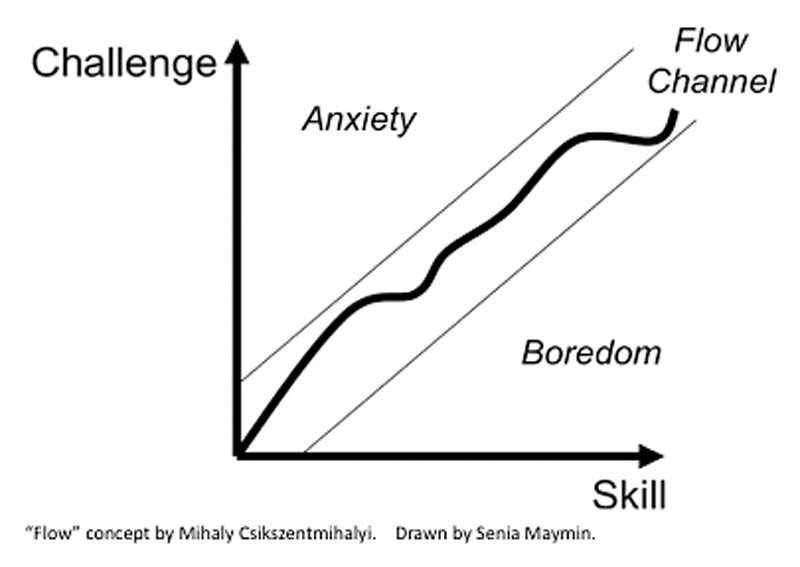The average person has 70,000 thoughts each day, and if you don’t learn to organize them, they have the potential to wreak havoc on your productivity.
When you succumb to the flurry of thoughts running through your head, your mind becomes disorganized, and the more you ruminate on intrusive thoughts, the more power you give them.
Most of our thoughts are just that—thoughts, not facts. When you find yourself believing the negative, distracting, and pessimistic things your inner voice says, it’s very hard to slow down the momentum of your thoughts.
In a recent study conducted at the National Institute on Aging, it was found that allowing your mind to be disorganized doesn’t just feel bad, it’s also actually bad for you. A disorganized mind leads to high stress, chronic negativity, and impulsivity. These states stifle productivity and contribute to a slew of health problems, including weight gain, heart disease, sleep problems, and migraine headaches.
Edward Hallowell, a therapist who helps people deal with disorganized minds, describes what happens when someone falls victim to his myriad of invasive thoughts: “He makes impulsive judgments, angrily rushing to bring closure. He is robbed of his flexibility, his sense of humor, and his ability to deal with the unknown. He forgets the big picture and the goals and values he stands for. He loses his creativity and his ability to change plans.”
An organized mind, on the other hand, falls into a state of flow. Flow is a blissful state of balance, where you are fully immersed in a task, completely free from distracting thoughts. Flow states enable you to enjoy your work and perform at the peak of your potential. Research shows people working in a state of flow are five times more productive than they’d otherwise be.
“May what I do flow from me like a river, no forcing and no holding back, the way it is with children.” – Rainer Maria Rilke
Here are five steps that I use to organize and declutter my mind, find flow, and keep myself on track for a productive day.
Step 1: Find the Right Amount of Challenge in What You Do
When you’re trying to get work done, it’s easy to lose focus and succumb to intrusive thoughts when the task at hand is too challenging or too easy. We thrive on a healthy challenge—something that simulates us without being so difficult that it produces anxiety or so simple that it induces boredom. When you consciously and carefully choose a task, you greatly increase your chance of achieving flow.

Step 2: Take Control of Your Emotions
While it’s impossible to control how things make you feel, you have complete control over how you react to your emotions. First, you need to be honest with yourself about what you are feeling and why you are feeling it. From there, it’s much easier to channel the emotion into producing the behavior that you want. The key is to identify and label your emotions as you experience them. Associating words with what you are feeling makes the emotion tangible and less mysterious. This helps you to relax, figure out what’s behind your emotion, and move forward. If you try to stifle your emotions and tackle your work without addressing them, they will slowly eat away at you and impair your focus.
Step 3: Sustain Your Focus
We all know that frustrating feeling of sitting down to tackle something important, only to quickly lose focus when we expected to dive right into the task. It takes time for your mind to become fully immersed in an activity. Studies have shown that it takes five to twenty minutes before people start to focus. If you can force yourself to persist in the activity in spite of any distractions for twenty minutes, the chances are much higher that you will be able to sustain your focus and find a state of flow. The best way to do this is to put away or turn off all of your typical distractions (phones, email, social media), then keep an eye on the clock until you’ve done nothing but your task for a good 20 minutes, even if you aren’t getting much done. Chances are that things will really start cooking for you once you hit the twenty-minute mark.
“It takes five to twenty minutes before people start to focus.”
Step 4: Take Breaks
Our brains and bodies simply aren’t wired for prolonged periods of work. While it might seem as though sitting at your desk for eight hours straight is the best way to get all of your work done, this can work against you. Research has shown that the most productive work cycle tends to be fifty-two minutes of uninterrupted work, followed by seventeen-minute breaks. While it probably isn’t realistic to structure your schedule this rigidly, for most people, the battle is won by just remembering to take breaks. Just be certain to pepper several short breaks throughout your day.
Step 5: Shift Sets
Once you’ve taken a break, you must shift your focus back to your task. No matter how “in the zone” you were before taking a break, you’ll sometimes find that you’re back to square one when it comes to focus. To do a proper set shift, you have to reorganize your thoughts by following steps one through four above, especially if you’re having trouble diving back into the task. You’ll find that getting back into flow quickly after a break is very doable, but it must be done purposefully.
Bringing It All Together
Organizing your mind to experience flow isn’t particularly difficult, but it does require attention and monitoring. Lean on these five steps any time you need to get more done.
This post was originally published by Dr. Travis Bradberry on LinkedIn.




























